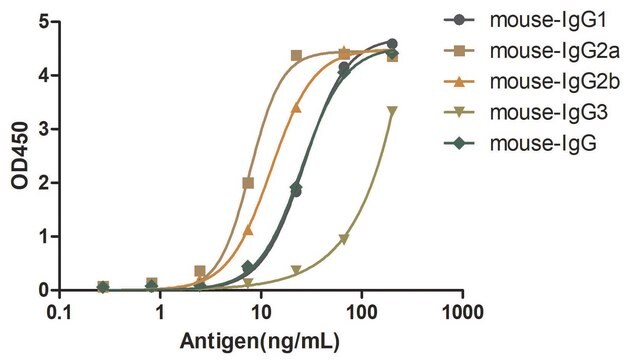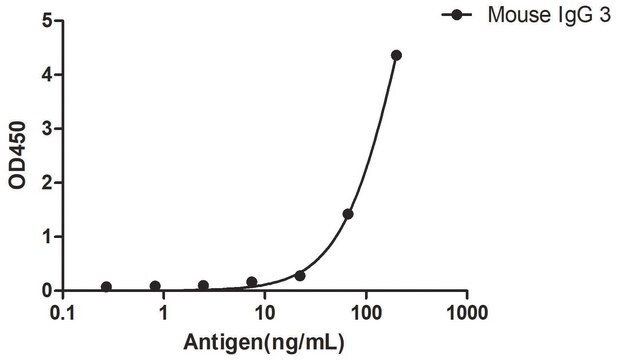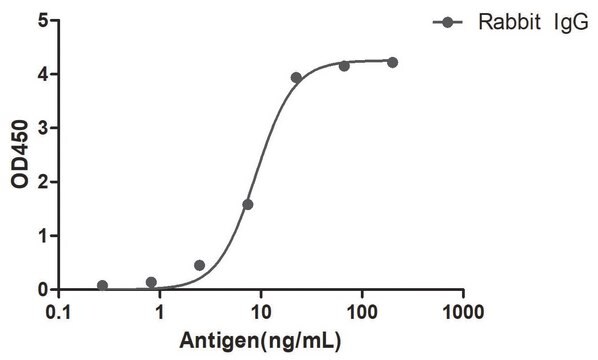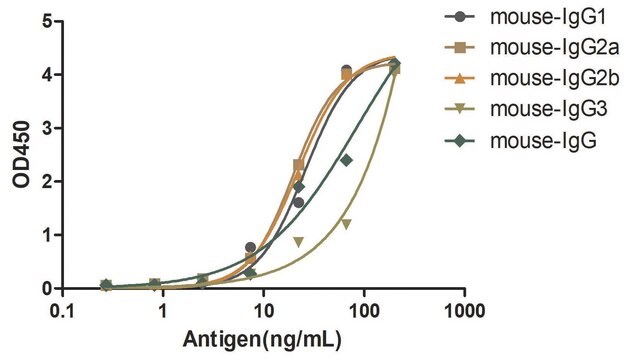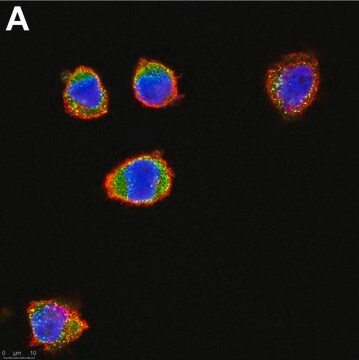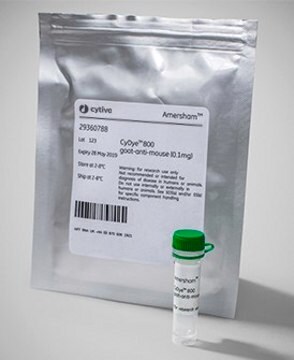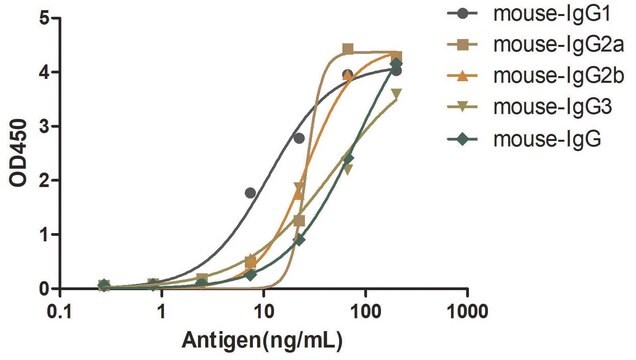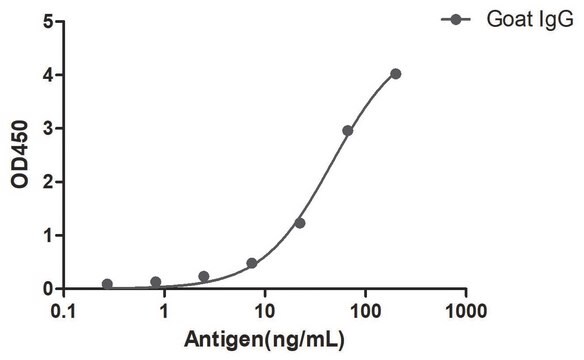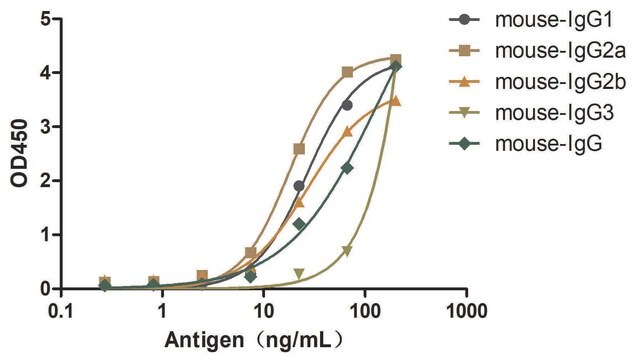SAB5801003
Alpaca Anti-Mouse IgG(Fcγ) single domain Antibody
recombinant Alpaca(VHH) Nano antibody
Sinónimos:
Recombinant Alpaca single variable domain secondary Nanobody
About This Item
Productos recomendados
origen biológico
alpaca
recombinante
expressed in E. coli
conjugado
unconjugated (6*his tag and one cys were added at the C terminal of the VHH)
forma del anticuerpo
affinity purified immunoglobulin
tipo de anticuerpo
secondary antibodies
clon
polyclonal
Formulario
lyophilized solid
mol peso
14 kDa
reactividad de especies
Alpaca, mouse
técnicas
ELISA: 1:10000-1:50000
western blot: 1:10000-1:50000
tamaño
0.1 mL
color
colorless
isotipo
VHH
Condiciones de envío
wet ice
temp. de almacenamiento
2-8°C
Descripción general
Most monoclonal antibodies are generated in mouse. There are five antibody isotypes (IgA, IgD, IgE, IgG, and IgM) from mouse. Each isotype has a different heavy chain. Mouse IgG constitutes 75% of serum immunoglobulins, and IgG is the predominant form of first antibody produced from mouse. Mouse IgG consists of five subclasses-IgG1, IgG2a, IgG2b, IgG2c(inbred mouse strains with the Igh1-b allele have IgG2c isotype instead of IgG2a), IgG3. They are highly homologous and differ mainly in the hinge region. The whole IgG molecule possesses both the Fc region and the Fab region, which possessing the epitope-recognition site. The IgG contains two heavy and light chains, and the heavy chain is about 50 KD and the light chain is about 25 KD. The common IgG is monomeric with a molecular weight of approximately 150 kD.
VHH are single-domain antibodies derived from the variable regions of heavy chain of Camelidae immunoglobulin. The size of VHH is extremely small(<15KDa) compared to other forms of antibody fragment, which significantly increase the permeability of VHH. Thus VHH is considered of great value for research, diagnostics and therapeutics.
Especificidad
Isotype: VHH domain of alpaca IgG2b/2c
Inmunógeno
Envase
Forma física
Reconstitución
Almacenamiento y estabilidad
Otras notas
¿No encuentra el producto adecuado?
Pruebe nuestro Herramienta de selección de productos.
Palabra de señalización
Warning
Frases de peligro
Consejos de prudencia
Clasificaciones de peligro
Aquatic Chronic 3 - Skin Sens. 1
Código de clase de almacenamiento
13 - Non Combustible Solids
Clase de riesgo para el agua (WGK)
WGK 3
Punto de inflamabilidad (°F)
Not applicable
Punto de inflamabilidad (°C)
Not applicable
Elija entre una de las versiones más recientes:
Certificados de análisis (COA)
It looks like we've run into a problem, but you can still download Certificates of Analysis from our Documentos section.
Si necesita más asistencia, póngase en contacto con Atención al cliente
¿Ya tiene este producto?
Encuentre la documentación para los productos que ha comprado recientemente en la Biblioteca de documentos.
Global Trade Item Number
| Número de referencia del producto (SKU) | GTIN |
|---|---|
| SAB5801003-100UG | 4065269793373 |
Nuestro equipo de científicos tiene experiencia en todas las áreas de investigación: Ciencias de la vida, Ciencia de los materiales, Síntesis química, Cromatografía, Analítica y muchas otras.
Póngase en contacto con el Servicio técnico